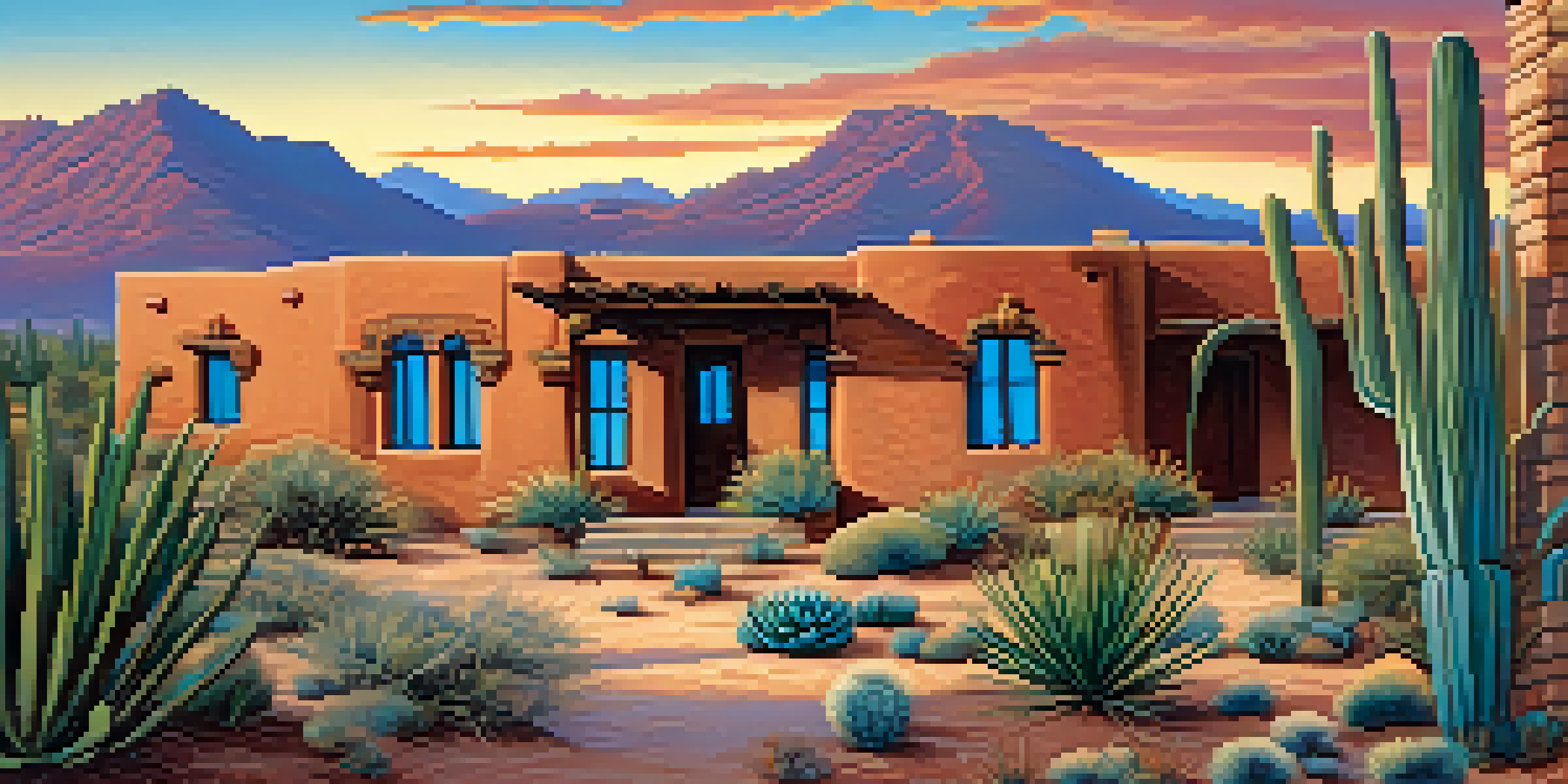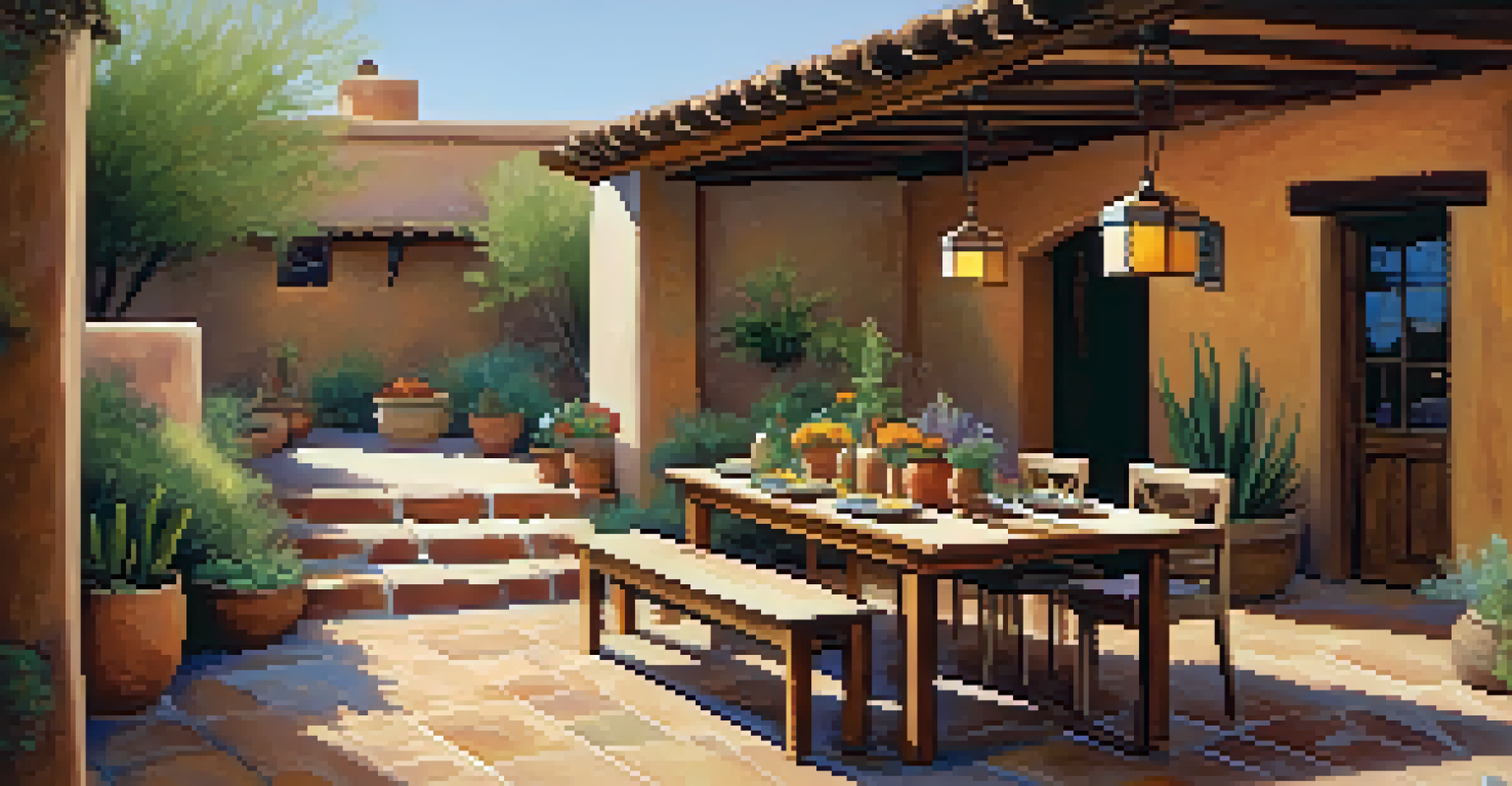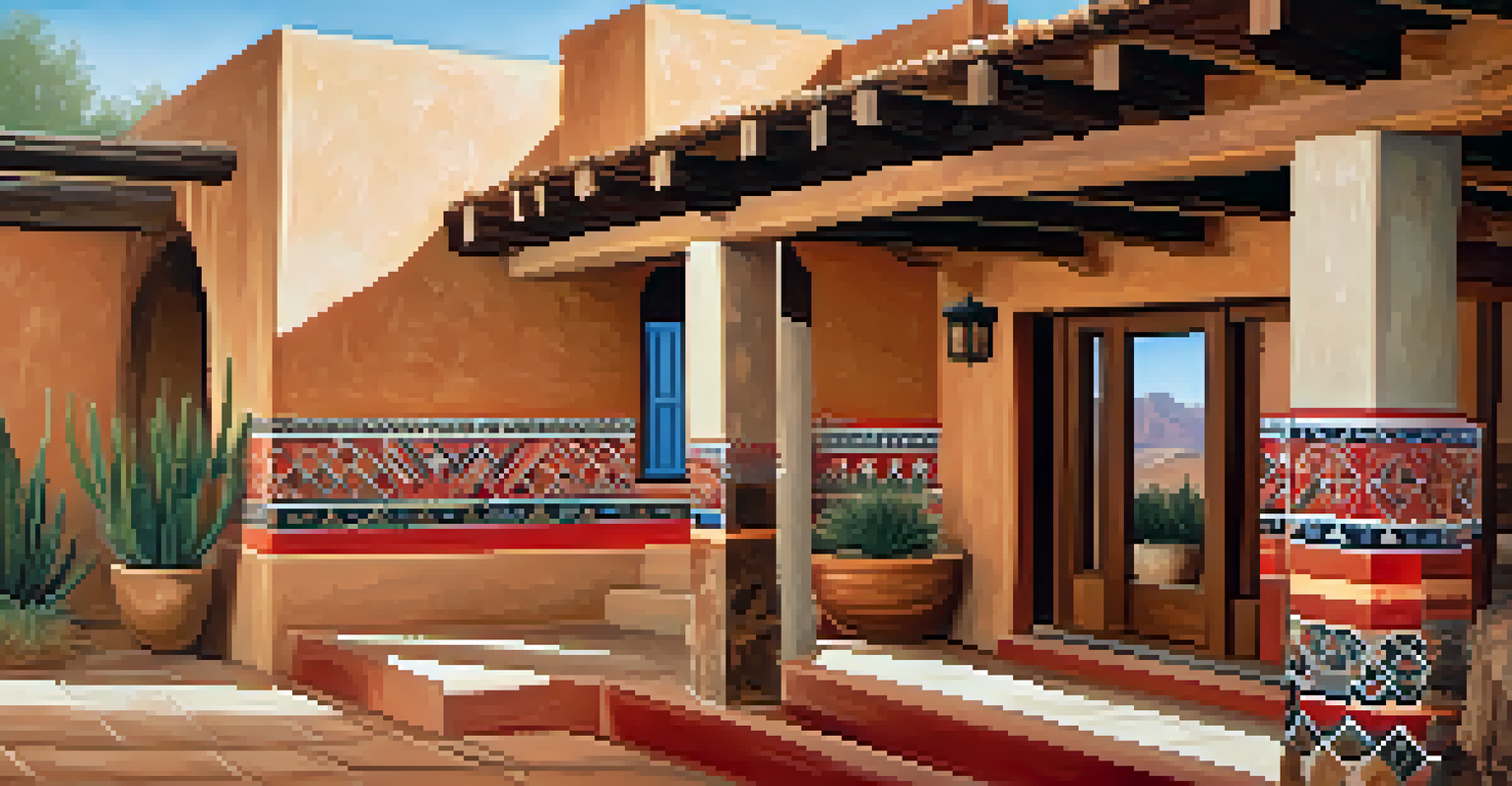The Influence of Southwestern Design on Scottsdale Buildings

Understanding Southwestern Design and Its Origins
Southwestern design is a captivating blend of various cultural influences, primarily Native American, Spanish, and Mexican aesthetics. This design style is characterized by earthy tones, natural materials, and intricate details that pay homage to the region's rich history. In Scottsdale, these elements come together to create a visually stunning architectural landscape that tells a story of the area's heritage.
Design is not just what it looks like and feels like. Design is how it works.
At its heart, Southwestern design embraces the beauty of the surrounding environment, often incorporating textures and colors that mirror the desert landscape. Think warm reds, soft browns, and vibrant turquoise, all inspired by the local geography. This connection to nature is not just for show; it reflects a lifestyle that prioritizes comfort and harmony with the environment.
As Scottsdale continues to grow and evolve, understanding the roots of Southwestern design becomes essential in preserving its unique character. Buildings that embody this style not only stand out visually but also serve as a reminder of the cultural narratives that shaped the region. This appreciation for history is crucial in maintaining the essence of Scottsdale.
Key Elements of Southwestern Architecture
When exploring Southwestern architecture, certain key elements consistently emerge, such as adobe walls, tiled roofs, and wrought iron accents. Adobe, made from sun-dried clay, is not only eco-friendly but also provides excellent insulation, making it ideal for desert climates. These materials contribute to the warm and inviting feel that Southwestern buildings are known for.

Another hallmark of this style is the use of vibrant colors and handcrafted details. From decorative tiles to intricate woodwork, these elements create a sense of authenticity and craftsmanship. They also add a personal touch that reflects the creativity and individuality of the builders and designers involved.
Cultural Roots Shape Design
Southwestern design reflects a rich blend of Native American, Spanish, and Mexican influences, creating a unique architectural identity.
Moreover, the layout of Southwestern buildings often emphasizes outdoor living spaces, with courtyards and patios that encourage connection with nature. This design philosophy fosters a laid-back lifestyle, inviting residents and visitors alike to enjoy the beautiful Scottsdale weather while engaging with the stunning surroundings.
The Role of Landscape in Southwestern Design
In Scottsdale, the landscape plays an integral role in shaping architectural designs, marrying the built environment with the natural world. This relationship is evident in how buildings are often sited to maximize views of the surrounding mountains and desert flora. Architects design structures that complement rather than compete with their environment, creating a harmonious balance.
Architecture is the learned game, correct and magnificent, of forms assembled in the light.
Landscaping is also a critical consideration in Southwestern design. Native plants, such as cacti and desert shrubs, are strategically placed to enhance the aesthetic appeal of buildings while promoting sustainability. This approach not only reduces water usage but also supports local wildlife, further connecting the architecture to its natural setting.
Additionally, the use of natural stone and earth-toned colors in both the buildings and landscaping helps to blur the lines between indoor and outdoor spaces. This fluidity encourages a sense of tranquility and well-being, reflecting the region's serene desert atmosphere.
Cultural Influences Reflecting in Scottsdale's Buildings
Scottsdale's architectural landscape is a vivid tapestry woven from various cultural influences, each adding its unique flair to the design. The Spanish colonial revival style, with its distinctive arches and vibrant tiles, is prominently featured in many buildings. This style pays homage to the area's historical roots and reinforces the connection to its past.
Native American culture also significantly influences Southwestern design, particularly in the use of symbolism and materials. Elements such as geometric patterns and natural textures are often incorporated, creating a deep cultural resonance within the architecture. This blending of styles not only enriches the aesthetic but also fosters a greater appreciation for the region's diverse heritage.
Sustainability in Architecture
Modern Southwestern architecture emphasizes eco-friendly materials and energy-efficient practices to align with environmental awareness.
Moreover, as Scottsdale attracts residents and visitors from all over the world, the architectural scene continues to evolve. Modern interpretations of Southwestern design are emerging, showcasing innovative approaches while staying true to traditional elements. This dynamic interplay between old and new keeps Scottsdale's architectural identity vibrant and ever-changing.
The Impact of Southwestern Design on Local Identity
The influence of Southwestern design extends beyond aesthetics; it plays a vital role in shaping Scottsdale's local identity. The distinct architectural style has become synonymous with the city's image, attracting tourists and new residents alike. This unique character fosters a sense of pride among locals, who often see themselves as stewards of this rich architectural heritage.
Moreover, buildings that reflect Southwestern design often serve as cultural landmarks, hosting events and activities that celebrate the local community. These spaces become gathering places where people come together to share experiences and traditions, further solidifying their connection to the region. In this way, architecture becomes a catalyst for social cohesion.
As Scottsdale continues to grow, the challenge lies in maintaining this identity amidst modern development. Striking a balance between progress and preservation is essential to ensure that the spirit of Southwestern design remains at the forefront of the city’s evolution.
Sustainability in Southwestern Architecture
Sustainability is a crucial consideration in contemporary Southwestern architecture, reflecting a growing awareness of environmental impact. Many builders and architects are now prioritizing eco-friendly materials and energy-efficient designs that align with the principles of Southwestern aesthetics. This shift not only preserves the unique architectural style but also promotes responsible living.
Incorporating features like solar panels, rainwater harvesting systems, and native landscaping are becoming common practices in new developments. These elements enhance the sustainability of buildings while maintaining their visual appeal. By aligning modern technology with traditional design, Scottsdale showcases how architecture can evolve without losing its cultural roots.
Future of Southwestern Design
Innovative materials and smart technology integration are set to evolve Southwestern design while preserving its traditional charm.
This commitment to sustainability also resonates with the community, as residents increasingly value green living. Buildings that embody these principles not only contribute to a healthier environment but also enhance the quality of life for those who call Scottsdale home.
Future Trends in Southwestern Design
As we look to the future, Southwestern design is likely to continue evolving while remaining true to its roots. Architects are exploring innovative materials and techniques that honor the traditional aesthetic while embracing modern functionality. This blend of old and new will keep Scottsdale's architectural scene fresh and exciting.
One emerging trend is the incorporation of smart home technology, seamlessly integrated into the Southwestern design framework. These advancements aim to enhance comfort and convenience without compromising the style's integrity. As technology becomes more integral to our lives, it will be interesting to see how it shapes the future of Southwestern architecture in Scottsdale.

Additionally, the increasing focus on community-driven designs will likely influence future projects. Buildings that encourage social interaction and collaboration, while reflecting the unique Southwestern character, will play a significant role in shaping Scottsdale's architectural identity in the years to come.